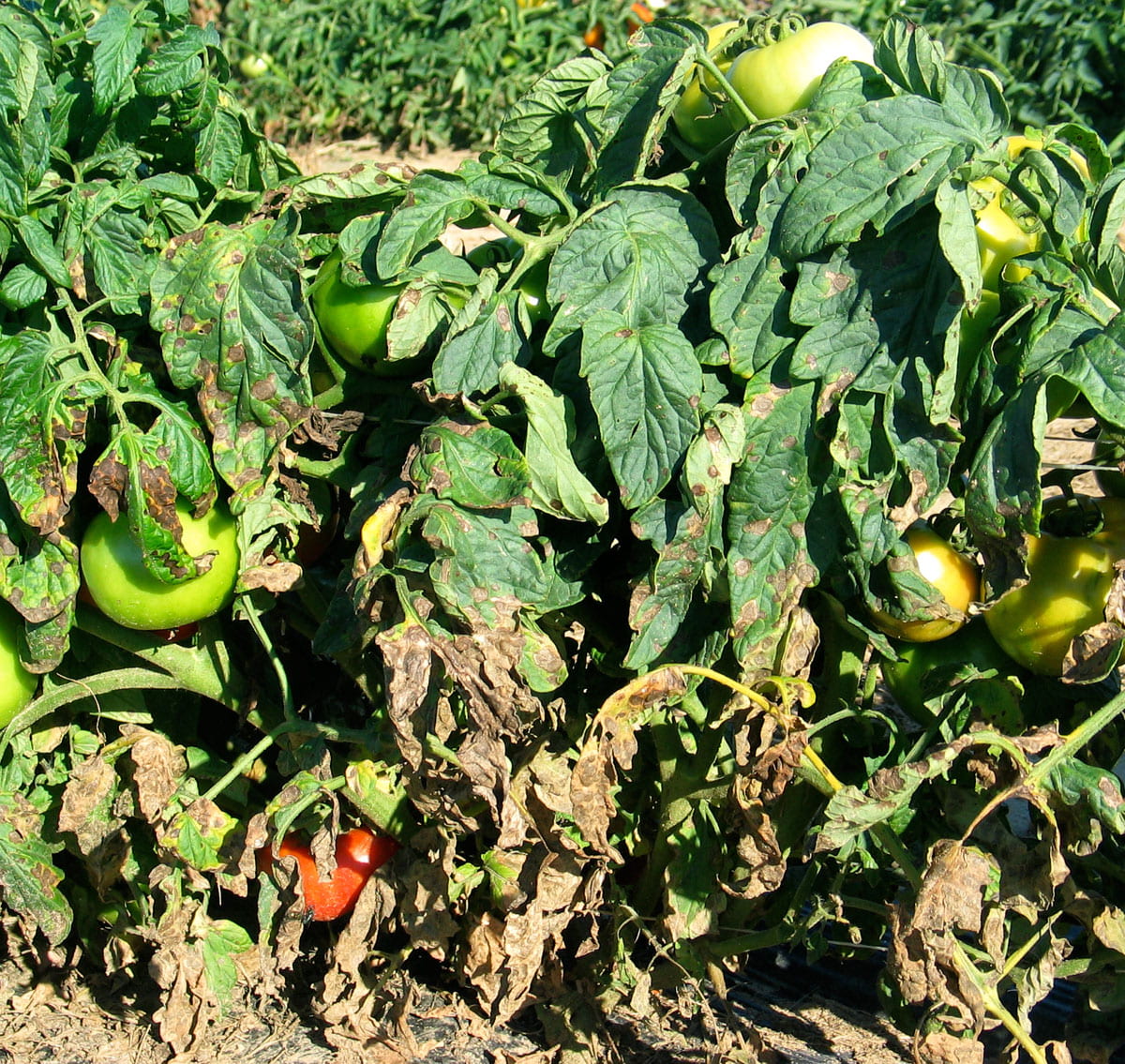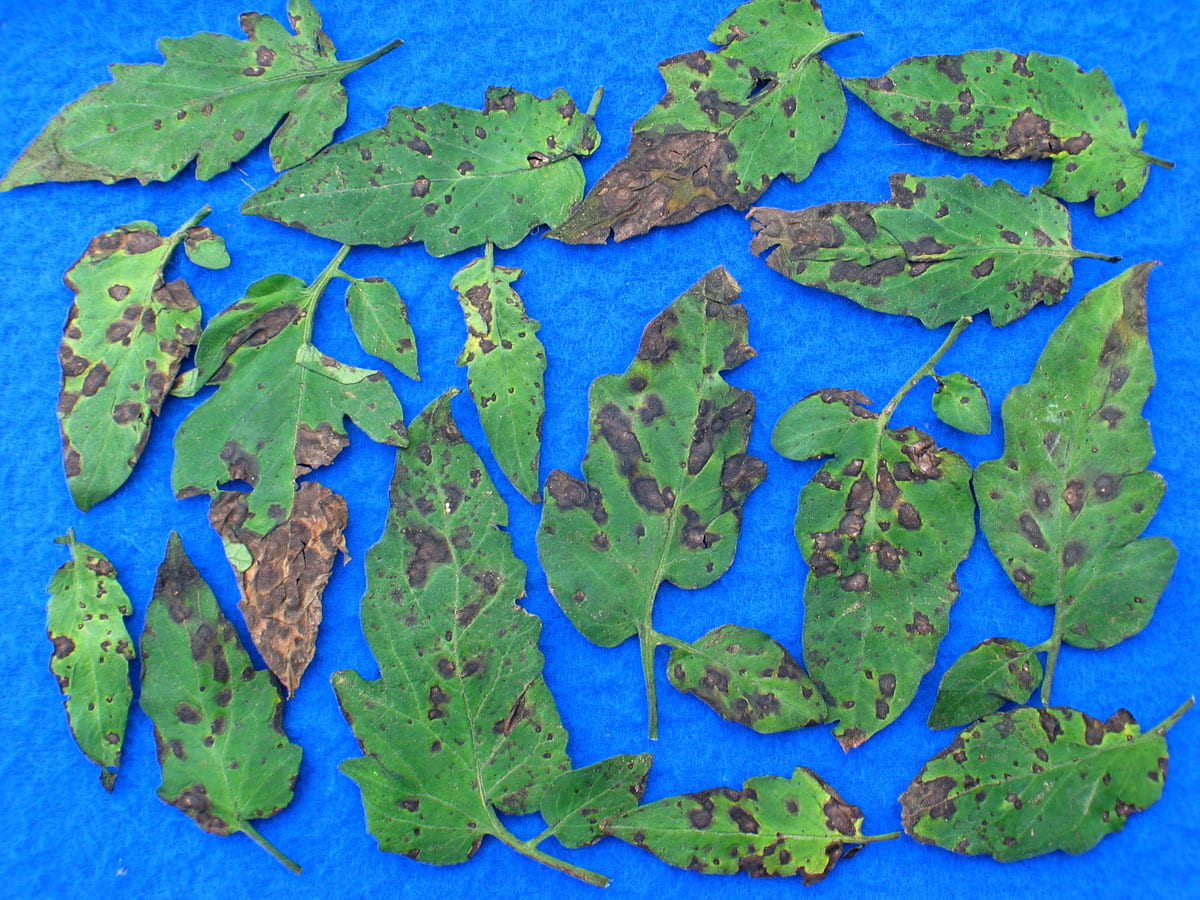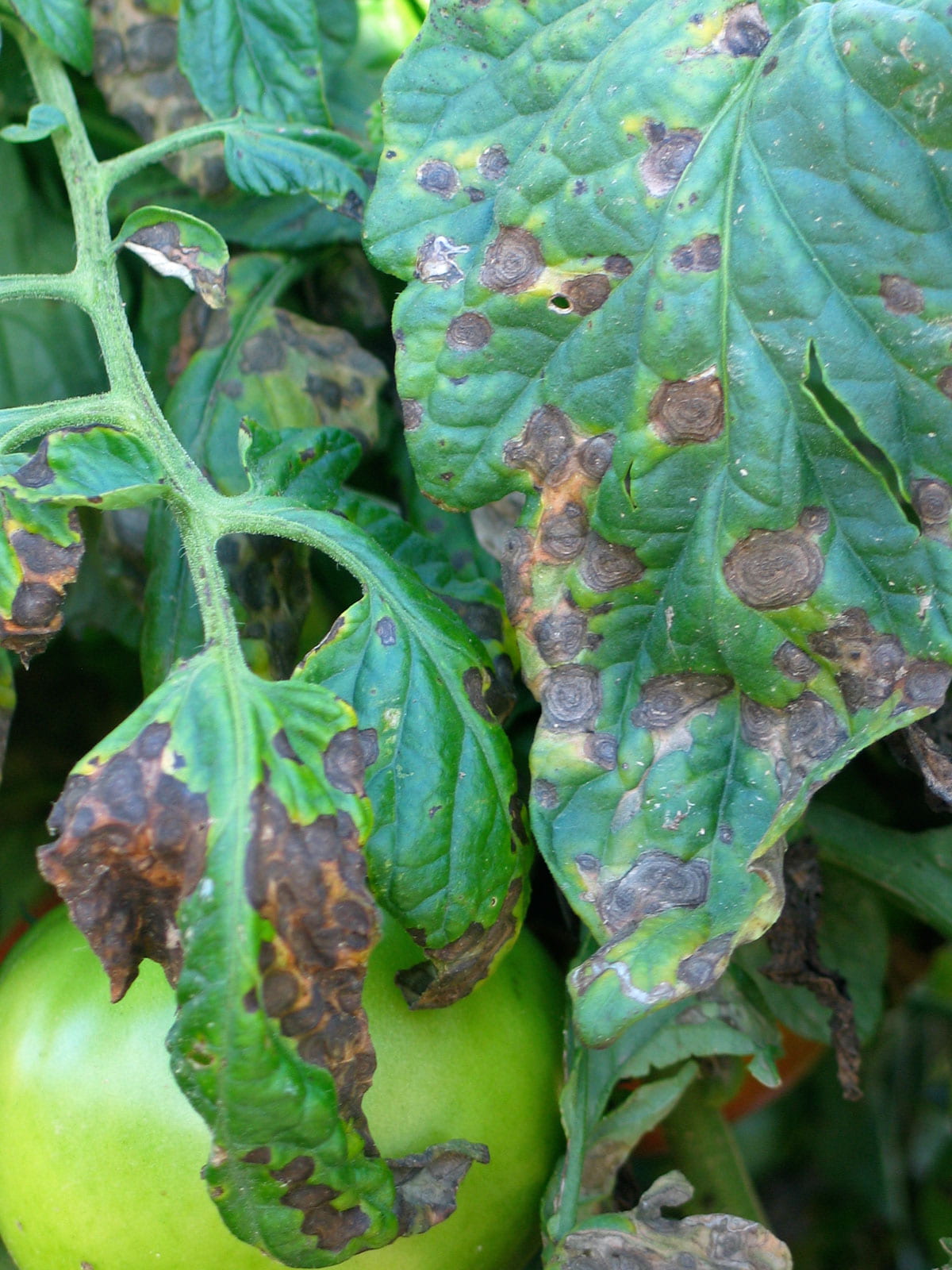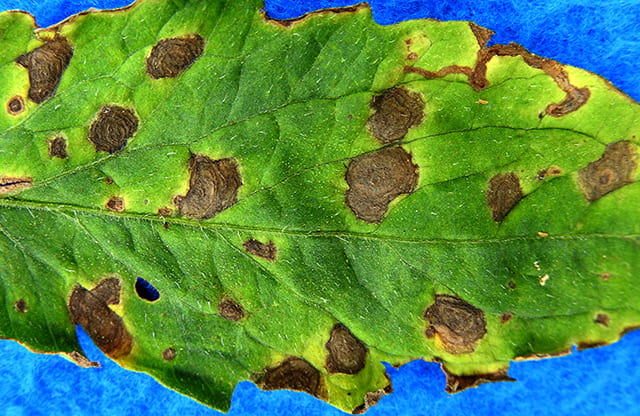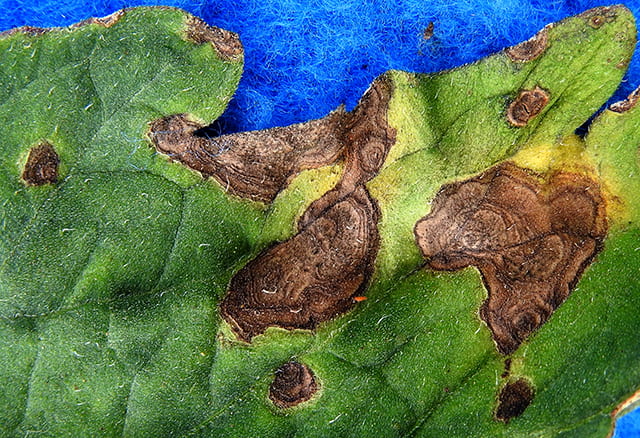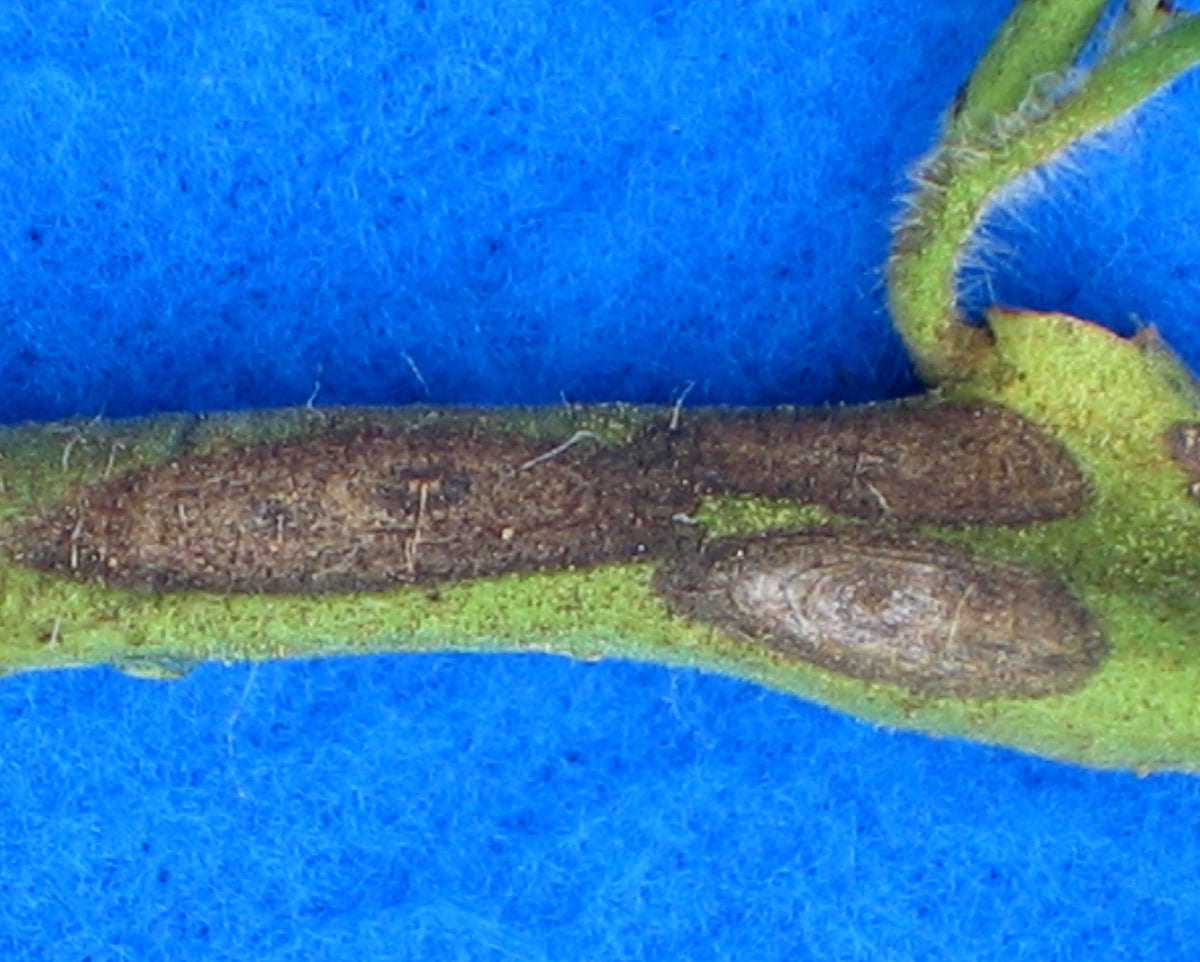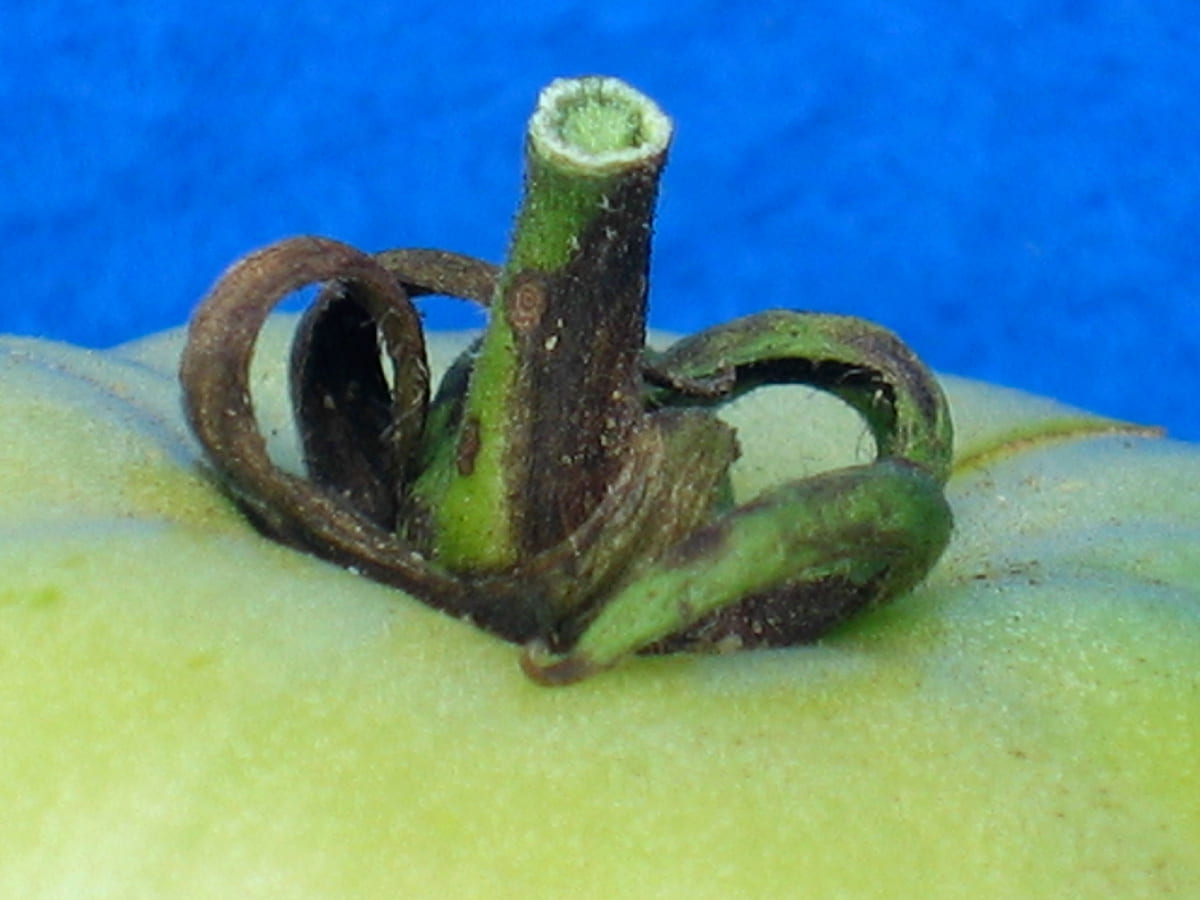The main symptom of early blight is round leaf spots with a characteristic target appearance due to the dark concentric rings that develop in most spots. They are about .5 inch in diameter. Spots first appear on older leaves near the base of the plant. The causal fungal pathogen also produces symptoms on stems and fruit. Young seedlings can be killed by stem lesions developing at their base. Sources of the pathogen are infested seed, debris from infected plants left in or on the soil (where it can survive at least 1 year), and spores from other affected plants dispersed typically short distances by wind, water, insects, or animals.
Below: Early blight symptoms first appear on older leaves near the base of the plant.
Below: Tomato leaves infected with early blight.
Below: Note the ‘target’ appearance of concentric rings. The causal fungus can also cause symptoms on stems and fruit.
Below: Early blight on tomato stem.
Below: Symptoms of early blight on fruit calyx and stem.
Below: One reason tomatoes are grown in high tunnels is to avoid diseases like early blight that are caused by pathogens that need leaves to be wet for several hours in order to infect. Following images taken on 17 June 2019 by Sandy Menasha, Vegetable Specialist Cornell Cooperative Extension of Suffolk County, document that early blight can occur in high tunnel tomatoes. Leaves may have become wet from condensation dripping from the tunnel roof, leaks in top of irrigation tubing or water depositing on leaves under high humidity.



